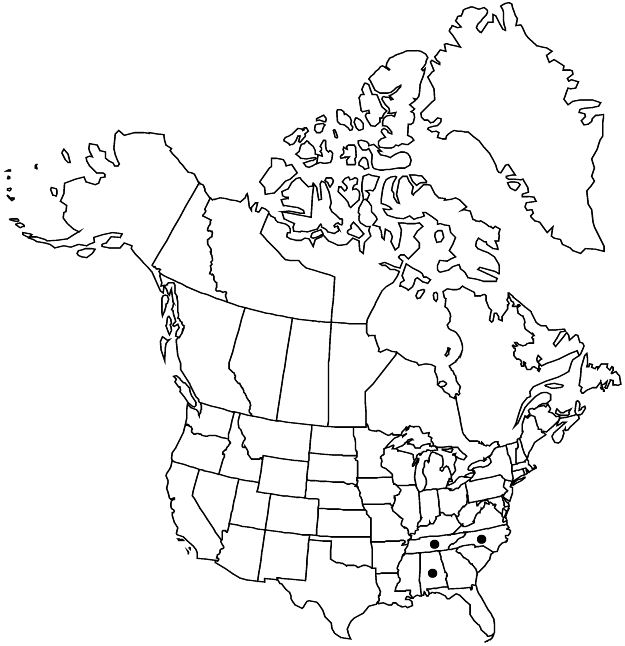Crataegus communis
Biltmore Bot. Stud. 1: 58. 1902.
Shrubs, 15–20 dm. Stems: twigs: new growth reddish, glabrous, 1-year old dull reddish brown, 2-years old dark gray, older paler gray; thorns on twigs: course not recorded, 2-years old dark, slender, short. Leaves: petiole 1 mm wide, length 30–50% blade, pubescence not recorded, glandular; blade broadly elliptic, 3–8 cm, thin to subcoriaceous, base cuneate, lobes 0, or 2 or 3 per side, obscure or reduced to apiculi, lobe apex subobtuse, margins strongly serrate, teeth gland-tipped, especially toward base, veins 4 or 5 per side, apex acute, surfaces hairy young, glabrescent. Inflorescences 3–8-flowered; branches glabrous; bracteole margins short-stipitate-glandular. Flowers 13–18 mm diam.; hypanthium glabrous; sepals 5–7 mm, margins glandular-serrate, abaxially glabrous; stamens 10, anthers rose; styles 2–4(or 5). Pomes yellow-green to dull orange, orange-red, or red, suborbicular to short-oblong or obovoid, 9–12 mm diam., glabrous; sepals on collar, patent-reflexed; pyrenes 2–4(or 5).
Phenology: Flowering Apr; fruiting Sep–Oct.
Habitat: Brush, successional fields, open woodlands
Elevation: 100–400 m
Distribution

Ala., N.C., Tenn.
Discussion
Of conservation concern.
Crataegus communis is uncommon and often wrongly annotated as C. straminea. The species has broadly elliptic leaves with small, very obscure or lacking, subobtuse lobes.
Selected References
None.